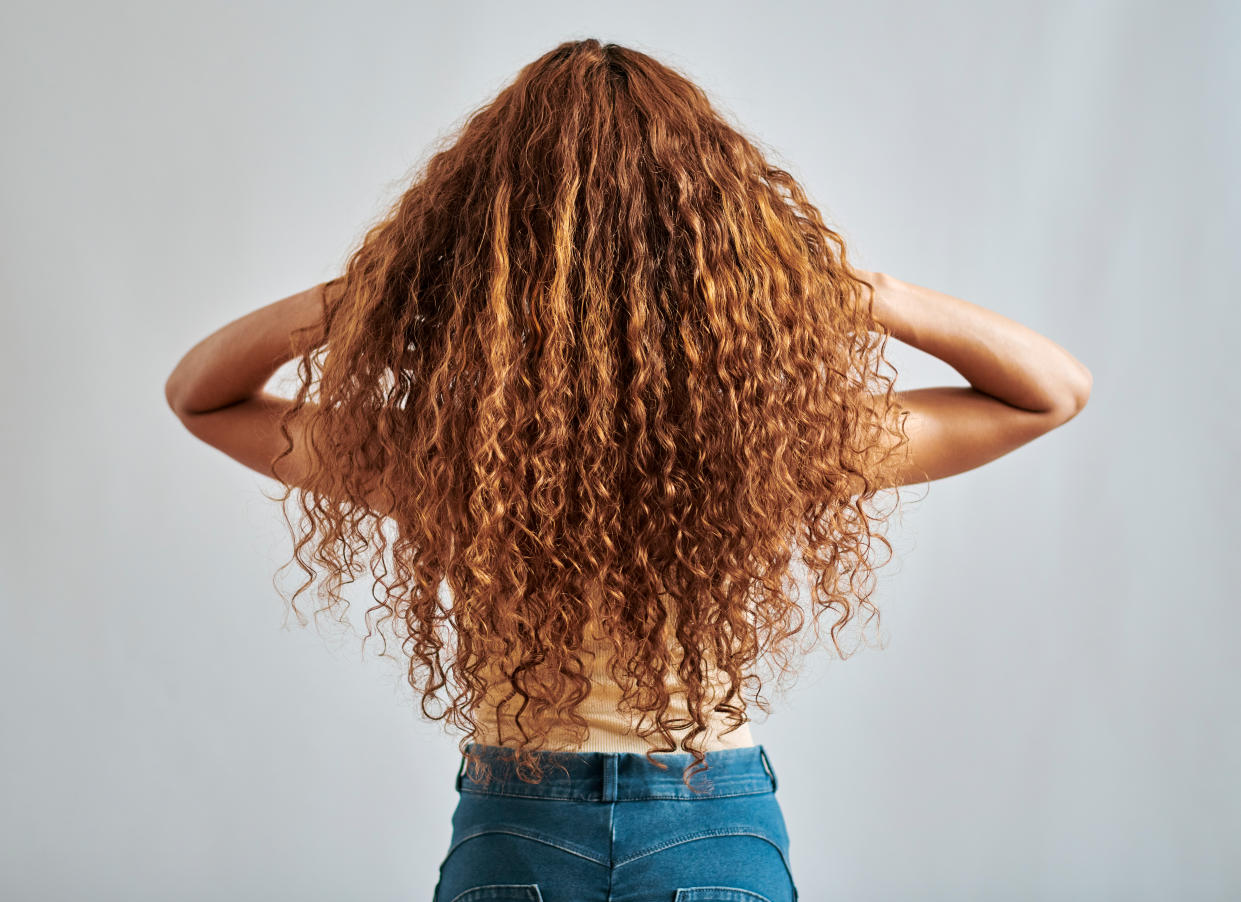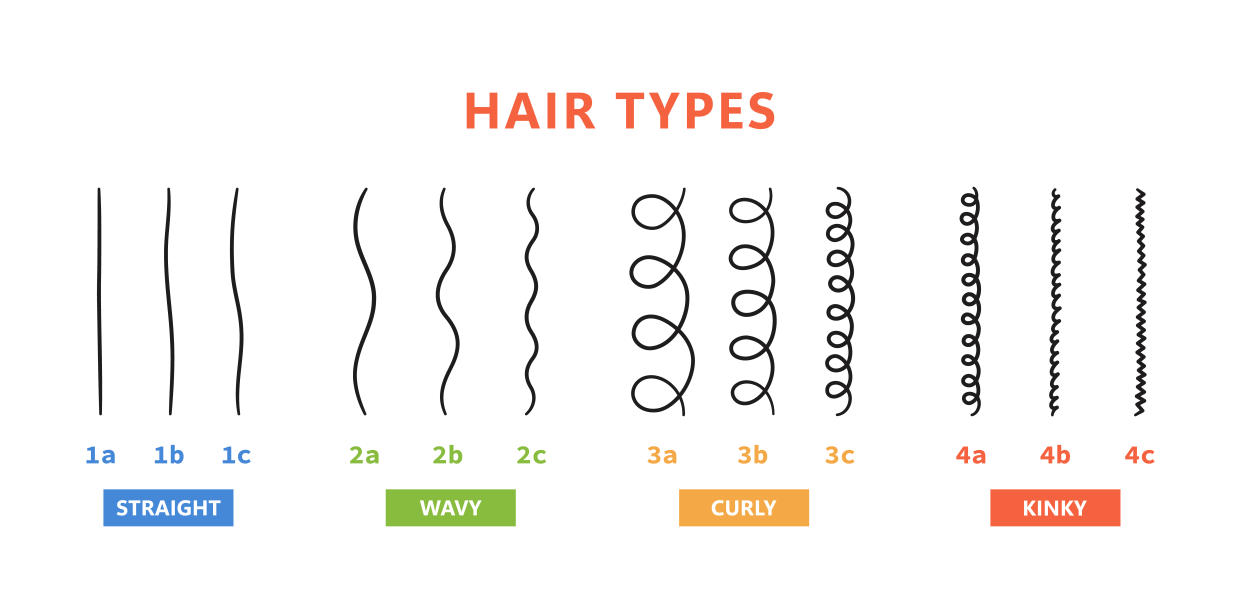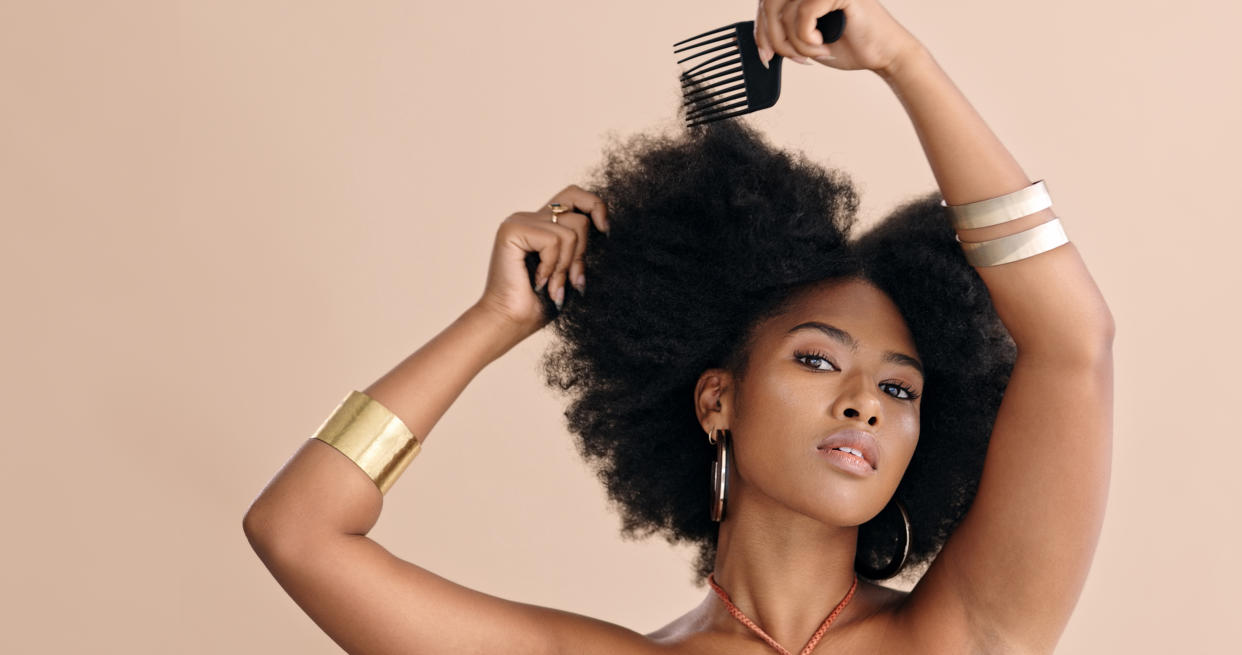Hair type chart: How to find your hair type, from straight 1A strands to 4C curls

Your hair is unique, and understanding your particular hair texture is key to caring for it effectively. The hair type chart, which you can use to find the natural pattern of your strands, is a good place to start if you're not sure which hair products work best for you.
The chart categorizes hair into four different types — straight, wavy, curly and kinky — and further breaks down subcategories for each type. By identifying your hair type, you can better tailor your hair care routine to enhance your strands' natural beauty and keep them healthy.
We'll tell you all about the hair type chart and why it's important to understand your hair's texture. Once you're in the know, check out the best shampoos and conditioners, according to experts.
What's the hair type chart, and is it just for curly hair?
The hair type chart is a system that was designed to help you find your hair shape and pattern. It applies to hair of all different textures, not just curly hair. Here's how the different types break down.
Type 1: Straight hair
Type 2: Wavy hair
Type 3: Curly hair
Type 4: Coily/kinky hair
What do the letters mean on the hair type chart?
Now that you know the four types of hair, we'll break down the subcategories within those types.
Straight hair
1A: Very straight, fine, thin hair with no curl pattern
1B: Straight but with more volume and body
1C: Straight with some coarse or thick strands and slight bends
Wavy hair
2A: Loose, natural waves with a fine texture
2B: More defined waves with a medium texture
2C: Thick, coarse waves with an S-shape pattern
Curly hair
3A: Loose, large, well-defined curls
3B: Tighter curls with more volume and medium thickness
3C: Thick, tight curls with a coarser texture
Kinky hair
4A: Soft, tightly coiled hair with a defined S-shape pattern
4B: Tighter, less defined curls with a Z-shape pattern
4C: Very tight coils with a coarser and fragile texture
Still unsure? The visual chart may help:

Who created the hair type chart?
The original hair type chart, also known as the hair typing system, was created by Andre Walker, Oprah Winfrey's hairstylist, in the 1990s. He debuted the system on Winfrey's show to promote his line of hair products. Since then, updated versions of the hair type chart have emerged that include more diversity within the textures. Walker's hair type chart didn't include the 3C and 4C hair types.
Why is it important to know your hair type?
Understanding your hair type can help you develop a more customized hair care routine that can better prevent damage to your locks and keep your hair healthy.
"By reflecting on what your hair is like, it can help you to make better decisions about your personal needs and products that can cater to that," Chelcey Salinger, director of the International Association of Trichologists, tells Yahoo. (Trichologists study the science of the hair and scalp).
However, it's important that you don't get too caught up in hair typing, says Carolina Contreras, owner of Miss Rizos, a hair care company that caters to curly, wavy, coily textures. Instead, you need to pay attention to your environment and other factors that can affect your hair. "So many variables determine the way hair behaves and looks, so categorizing it into types isn't enough," she cautions. For curly hair, she adds that there can be different curl textures all over your head — for instance, you may have 3A curls on the front and 4B curls on the back.
You should also take into consideration any chemicals used on your hair, from perms to dyes, as they can change the texture of your hair. "Heat damage and hormonal imbalances can also affect texture," Contreras says.
How does hair type influence the products you use?
Knowing your hair type, as well as anything affecting your hair type, can be a great start for figuring out the best products to use.
"Curly hair that tends to go frizzy will be looking for products that are curl-defining and anti-frizz, whereas type 1 hair may be looking for products that are more volumizing," Salinger says.
Contreras says that if your hair density is lower, you should use a lower-density product, and if you have high-density hair, try using higher-moisture products, like a leave-in conditioner, to minimize volume. She says you should also focus on hair health to determine whether your strands need protein or moisture, based on porosity — that is, how well your hair absorbs and holds moisture.
Penny James, owner of Penny James Trichology Center, recommends using a thickening spray on thin hair. For coily and curly hair, she says hydrating products that contain coconut oil work best. She also recommends finding out what tools, including hairbrushes, your hairstylist uses on you and having them show you how to use those tools correctly.
How do you find your hair type using the hair type chart?
If you're not sure where to begin, check out the chart above. "It's as simple as looking at your unstyled, natural hair and matching it with a certain curl pattern on the chart," Salinger says.
For the best results, let your hair air-dry after showering, as using a blow-dryer can change your natural hair pattern. Then see how it lies once it's dry.
If you're still unsure, you can book an appointment with a hairstylist or trichologist. "A trained specialist helping you understand your hair type is a powerful tool in your hair care arsenal," James says. "It can guide you in choosing the right products, tools and even the best hairdresser for your unique hair."

Does the condition of your scalp influence your hair structure?
Yes, it can. Contreras says scalp health is important to maintaining healthy locks. She recommends applying styling products at least half an inch away from the scalp to prevent itchiness and sebum buildup.
The temperature of the water you use while washing your hair can also affect your scalp and hair. For instance, hot water can strip away the natural oils and moisture from your hair, leaving you with dry or damaged strands. You should also check out how often you should be washing your hair, based on your hair type.
Scalp diseases can also change hair texture, James says. "When the follicle has been damaged or the sebaceous glands have stopped producing sebum, it can change the texture of your hair."
What is the rarest hair type?
"This would depend on what part of the world you were in. In the U.S. it would probably be 4B and 4C," Salinger says. "But it is interesting to note that the number of people with curly hair is increasing as we have more mixing and melding of people from different backgrounds."


